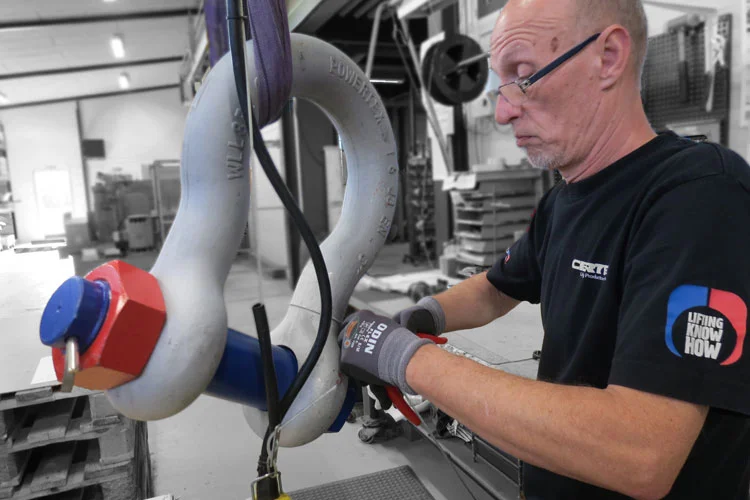Shackles properties and use

How to choose the correct shackle
In lifting and rigging, the shackle is a crucial component known for its strength and versatility across various applications. With numerous designs and models available, selecting the right shackle for your specific lifting needs requires careful evaluation. Our Lifting KnowHow resources provide guidance to help you make an informed decision before purchasing your next shackle.
Understanding the different variations of shackles
A shackle generally comprises a curved body and a pin, which secures the shackle. The pin can be either a screw pin or a safety bolt with a nut and steel cotter pin.
Categories of shackles
Shackles are primarily divided into two categories:
- Bow Shackles (H-Shackles): These feature a rounded arch, providing a larger contact surface. They are ideal for joining two slings in a lifting device's hook or for lifting slings with multiple parts. For textile slings, consider bow shackles with an extra-wide bow, known as wide body shackles.
- Dee Shackles (D-Shackles): These have straight sides on the shackle bow, making them suitable for single-part slings and straight-lift loads.
Design considerations
If the shackle will be moved frequently or needs to be part of a permanent connection, a safety bolt shackle with a nut and pin is preferable. For applications where the shackle needs to be removed regularly, a screw pin model is more suitable.
Materials
Shackles come in various materials, including stainless steel, high-strength steel, forged alloy, or drop-forged steel. Pay attention to the steel grade to ensure it meets the requirements of your lifting operation.
Factors influencing the choice of shackle
Selecting the best shackle for your task involves considering the following factors:
- Load Requirements: Assess the load capacity, working load limit (WLL), and any special forces the shackle must handle. Choose a shackle with a WLL that exceeds the maximum load it will be subjected to.
- Environmental Conditions: Consider the environment where the shackle will be used. For corrosive environments, stainless steel shackles are preferred. For heavy-lifting applications, alloy steel shackles are more suitable.
- Application Specifications: Evaluate factors such as load angle, compatibility with other lifting components, and frequency of use. If the shackle will not be used for lifting tasks, a commercial shackle may be sufficient.
Marking
For a shackle to be approved for lifting, it must be clearly marked in accordance with standards. This includes markings for CE certification, working load limit (WLL), size, class, and batch number for traceability. Additionally, it must meet the performance requirements of EN 13889 and/or US Federal Specification RR-C-271 Type IVA Class 2, Class A.
Shackles lacking these essential markings are not approved for lifting operations.

Best practices for shackles
As with all lifting equipment, some points should be observed.
Regular inspection and maintenance
Conduct regular visual inspections of shackles to check for wear, corrosion, or any signs of damage. If you have any doubts about the condition of the shackle, mark it clearly as out of service and have it examined by a qualified professional who can replace or repair it to uphold safety standards. Additionally, ensure that you adhere to all statutory service inspection requirements.
Load testing and compliance
Perform load tests to verify that the shackle can safely handle the anticipated loads. Ensure that you adhere to relevant standards and regulations for lifting points. For your convenience, Certex Norge AS offers load testing services to help you meet compliance requirements.
Correct installation
Ensure that shackles are installed according to the manufacturer's guidelines. Incorrect installation can compromise safety and lead to accidents during lifting operations.
Do you wish to know more about our Lifting KnowHow? Please reach out.
For faster response, call us directly at +47 66 79 95 00!
Proper use of lifting componentsLearn how to use lifting components correctly by reading this guide. You'll also find tips on selecting the best lifting components for your needs. |
Learn more |
Selecting the right shackleThis article outlines the various types of shackles and provides guidance on choosing the best model for your specific needs. |
Learn more |


